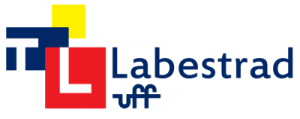Translation
French
Professor in charge: Mônica Fiuza BF (UFF/LABESTRAD)
Translation for subtitling has gone through history. Until the early 1990s, the audiovisual market in Brazil was well defined. There were open TV channels with dubbed programs and subtitling services were hired by the video and cinema distributors themselves. Consequently, online video market as such was virtually nonexistent. With the dissemination of cable TV and, later, with the emergence and expansion of the online video market resulting from the advent of the internet, this market grew rapidly. To meet the new demands of the translation job market, LABESTRAD has included subtitling techniques in its extension, research and teaching activities.
The subtitling translation process consists of observing that the time required to read a subtitle is much longer than the time it takes to speak up the corresponding text. The translation of the video-recordings is a much more complex process than one might imagine: knowledge of the working languages, cultures and understanding the Discourse Analysis concepts and terminology is required. For that purpose, a work methodology was created: readings of some Discourse Analysis theoretical texts, making up a basic glossary of Discourse Analysis main concepts, meetings and discussions with coordinators and members of LAS/UFF. In order to complement the methodology, mini-courses, workshops, seminars were held, including training in the subtitling program (Subtitle Workshop 6.0) chosen by LABESTRAD for this work.
The biggest challenge would be producing a ‘version’ and not a translation. Version, from the Latin word Vertere, to turn. In the common sense, a version is a variant of something original, for example: “The version that director produces of this play by Molière is brilliant”. “I’ll give my version of that fact.” In other words, it is an interpretation, an adaptation. If translation is one of the most difficult human activities, making versions requires even more skills. In a translation, the question of choices is very important. If I translate from a foreign language to my mother tongue, I always have plenty of choices.
In the version, knowledge of the foreign language is never perfect, there will always be details, unsaid enunciations etc. that only a native speaker would be able to understand. Even for those among us who know a foreign language very well, even if we can penetrate the intimacy of foreign people, it may be impossible for us to perceive the language and literary works as some individuals among that foreign people would be able to do. There is always some fraction of meaning, some delicate or extreme resonance that we would miss: we will never be sure of a total and indisputable comprehension. For videos-recordings in Discourse Analysis there would be disputed meanings, because Discourse Analysis was coined in France by Guespin, who defended it was part of sociolinguistics and generated enormous controversy. Later, after Michel Pêcheux’s death, this designation has been attributed to works that stem from many different theoretical and methodological orders and whose procedures are not articulated at all. In fact, Discourse Analysis is made up of a set of studies from different language disciplines such as Discourse Analysis itself, but above all pragmatics, textual linguistics, enunciation theory, sociolinguistics etc.
It is interesting to remark that the first Discourse Analysis texts were translated into Portuguese and now we translate concepts into French. This fact made the translation easier, and we have been really audacious to do so.
To what extent should one change what has been said? This is a controversial issue, both in translation and subtitling. Delimitating the extent to which a translator/subtitler can change the original text in order to improve and/or fix a specified “error” is subjective. Firstly, translators must be aware that the translation process is an ‘inter’ or ‘intralingual’ interpretation in which they play the role of co-author, that is, total fidelity to the text produced is utopian. So, translators stick to semantic fidelity, as Paul Ricoeur (2012, p.54) states: “to understand is to translate”. It is necessary to translate the idea and not the word.
Furthermore, when we talk about subtitling, we are dealing with a translation that it different from the written text because of the oral content in the source language that will be reproduced simultaneously with the text in the target language.
For that purpose, in the subtitling process, the options are:
– Eliminating pauses and repeated word parts common in self-corrections, typical to spoken language;
– Remove spoken language marks (discourse markers) including repetition of terms and expressions;
– Follow the written language punctuation rules according to the clues of the speaker’s utterance;
– Remake phrases and sentences that are incomplete or unclear;
– Adapt informal register to the formal register text;
– Fix phonological discrepancies and visual incoherencies.
REFERENCES:
MARTINEZ, S. L. tradução para legendas: uma proposta para formação de profissionais, 2007, in https://doi.org/10.17771/PUCRio.acad.10689
RICOEUR, P., Sobre a tradução. Editora UFMG, Belo Horizonte, 2012.

Labestrad – Laboratório de Estudos da Tradução da UFF
Rua Prof. Marcos Waldemar de Freitas, s/no. Campus do Gragoatá – Bloco C – sala 328
Niterói, RJ – CEP 24210-201
